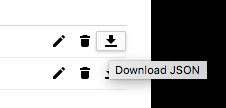Autentica apps instaladas con cuentas de usuario
En esta guía, se explica cómo llevar a cabo autenticaciones con cuentas de usuario para acceder a la API de BigQuery cuando tu app se instala en las máquinas de los usuarios.
A fin de garantizar que la aplicación solo acceda a tablas de BigQuery que estén disponibles para el usuario final, realiza la autenticación con una credencial de usuario. Con una credencial de usuario se pueden ejecutar consultas solo con el proyecto de Google Cloud del usuario final, en lugar del proyecto de la app. Como resultado, al usuario se le facturan las consultas, en lugar de la app.
Antes de comenzar
- Crea un proyecto de Google Cloud Platform que represente la app instalada.
- Instala las bibliotecas cliente de BigQuery.
-
Instalar bibliotecas de autenticación.
Java
Si usas Maven, incluye las siguientes dependencias en tu archivo pom.
Python
Instala la integración oauthlib para Google Auth.
pip install --upgrade google-auth-oauthlib
Node.js
Instala la integración oauthlib para Google Auth.
npm install google-auth-library
npm install readline-promise
Configura tus credenciales de cliente
Usa el siguiente botón para seleccionar un proyecto y crear las credenciales necesarias.Crea credenciales de forma manual
- Ve a la página Credenciales en la consola de Google Cloud.
- Completa los campos obligatorios en la pantalla de consentimiento de OAuth.
- En la página Credenciales (Credentials), haz clic en el botón Crear credenciales (Create credentials).
Elige el ID de cliente de OAuth.
- Selecciona Computadora de escritorio como el tipo de aplicación y, luego, haz clic en Crear.
- Haz clic en el botón Descargar JSON para obtener las credenciales.

Guarda el archivo de credenciales en
client_secrets.json. Este archivo se debe distribuir con tu app.
Autentica y llama a la API
- Usa las credenciales de cliente para realizar el flujo de OAuth 2.0.
Java
Python
Node.js
- Usa las credenciales autenticadas para conectarte a la API de BigQuery.
Java
Python
Node.js
Cuando ejecutas el código de muestra, se inicia un navegador que solicita acceso al proyecto asociado con los secretos del cliente. Puedes usar las credenciales que se generan para acceder a los recursos de BigQuery del usuario, ya que la muestra solicitó el alcance de BigQuery.
Pasos siguientes
- Aprende sobre otras formas de autenticar tu app para acceder a la API de BigQuery.
- Obtén información sobre la autenticación con credenciales de usuario final para todas las API de Cloud.
